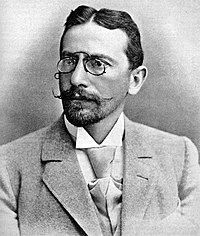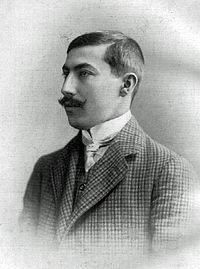|
Grandmaster (chess)Grandmaster (GM) is a title awarded to chess players by the world chess organization FIDE. Apart from World Champion, Grandmaster is the highest title a chess player can attain. Once achieved, the title is held for life, though exceptionally the title can be revoked for cheating. The title of Grandmaster, along with the lesser FIDE titles of International Master (IM), FIDE Master (FM), and Candidate Master (CM), is open to all players regardless of gender. The great majority of grandmasters are men, but 42 women have been awarded the GM title as of 2024, out of a total of about 2000 grandmasters.[1] There is also a Woman Grandmaster title with lower requirements awarded only to women. There are also Grandmaster titles for composers and solvers of chess problems, awarded by the World Federation for Chess Composition (see List of grandmasters for chess composition). The International Correspondence Chess Federation (ICCF) awards the title of International Correspondence Chess Grandmaster. Both of these bodies are now independent of FIDE, but work in cooperation with it. "Super grandmaster" is an informal term to refer to the world's elite players. In the past this would refer to players with an Elo rating of over 2600, but as the average Elo rating of the top players has increased, it has typically come to refer to players with an Elo rating of over 2700. Super GMs have some name recognition and are typically the highest earners in chess.[2][3] FIDE titles are awarded at the quarterly FIDE Council meetings. Players who have qualified for the GM title but have not yet been awarded it are informally referred to as "GM-elect".[4][5][6] HistoryUsage of grandmaster for an expert in some field is recorded from 1590.[7] The first known use of the term grandmaster in connection with chess was in the 18 February 1838 issue of Bell's Life, in which a correspondent referred to William Lewis as "our past grandmaster".[8] Subsequently, George Walker and others referred to Philidor as a grandmaster, and the term was also applied to a few other players.[8] Early tournament use The Ostend tournament of 1907 was divided into two sections: the Championship Tournament and the Masters' Tournament. The Championship section was for players who had previously won an international tournament.[9] Siegbert Tarrasch won the Championship section, over Carl Schlechter, Dawid Janowski, Frank Marshall, Amos Burn, and Mikhail Chigorin. These players were described as grandmasters for the purposes of the tournament. The San Sebastián 1912 tournament won by Akiba Rubinstein was a designated grandmaster event.[8] Rubinstein won with 12½ points out of 19. Tied for second with 12 points were Aron Nimzowitsch and Rudolf Spielmann.[10] By some accounts, in the St. Petersburg 1914 chess tournament, the title Grandmaster was formally conferred by Russian Tsar Nicholas II, who had partially funded the tournament.[9] The Tsar reportedly awarded the title to the five finalists: Emanuel Lasker, José Raúl Capablanca, Alexander Alekhine, Siegbert Tarrasch, and Frank Marshall. Chess historian Edward Winter has questioned this, stating that the earliest known sources that support this story are an article by Robert Lewis Taylor in the June 15, 1940, issue of The New Yorker and Marshall's autobiography My 50 Years of Chess (1942).[11][12][13] Informal and Soviet usage before 1950Before 1950, the term grandmaster was sometimes informally applied to world class players. The Fédération Internationale des Échecs (FIDE, or International Chess Federation) was formed in Paris in 1924, but at that time did not award formal titles. In 1927, the Soviet Union's Chess Federation established the title of Grandmaster of the Soviet Union, in the form of the German loan word "Großmeister". At the time Soviet players were not competing outside their own country. This title was abolished in 1931, after having been awarded to Boris Verlinsky, who won the 1929 Soviet Championship.[14] The title was brought back in 1935, and awarded to Mikhail Botvinnik, who thus became the first "official" Grandmaster of the USSR. Verlinsky did not get his title back.[14] Official status (1950 onwards) In 1950 FIDE created the titles of Grandmaster (GM), International Master (IM) and Woman Master (WM, later known as Woman International Master or WIM). The grandmaster title is sometimes called "International Grandmaster" (IGM), possibly to distinguish it from similar national titles, but the shortened form is far more common today. Titles were awarded by a resolution of the FIDE General Assembly and the Qualification Committee, with no formal written criteria. FIDE first awarded the Grandmaster title in 1950 to 27 players. These players were:
Since FIDE did not award the Grandmaster title posthumously, world-class players who died prior to 1950, including World Champions Steinitz, Lasker, Capablanca, and Alekhine, never received the title.[15] A few strong still living players such as British India's Mir Sultan Khan, Germany's Paul Lipke and France's Eugene Znosko-Borovsky were not awarded titles. Sultan Khan was awarded the GM title posthumously in 2024. 1953 regulations Title awards under the original regulations were subject to political concerns. Efim Bogoljubow, who had emigrated from the Soviet Union to Germany, was not entered in the first class of Grandmasters, even though he had played two matches for the World Championship with Alekhine. He received the title in 1951, by a vote of thirteen to eight with five abstentions. Yugoslavia supported his application, but all other Communist countries opposed it. In 1953, FIDE abolished the old regulations, although a provision was maintained that allowed older masters who had been overlooked to be awarded titles. The new regulations awarded the title of International Grandmaster of the FIDE to players meeting any of the following criteria:[16]
1957 regulationsAfter FIDE issued the 1953 title regulations, it was recognized that they were somewhat haphazard, and work began to revise the regulations. The FIDE Congress in Vienna in 1957 adopted new regulations, called the FAV system, in recognition of the work done by International Judge Giovanni Ferrantes (Italy), Alexander (probably Conel Hugh O'Donel Alexander), and Giancarlo Dal Verme (Italy). Under the 1957 regulations, the title of International Grandmaster of the FIDE was automatically awarded to:
The regulations also allowed titles to be awarded by a FIDE Congress on recommendation by the Qualification Committee. Recommendations were based on performance in qualifying tournaments, with the required score depending on the percentage of Grandmasters and International Masters in the tournament.[17] 1965 regulationsConcerns were raised that the 1957 regulations were too lax. At the FIDE Congress in 1961, GM Milan Vidmar said that the regulations "made it possible to award international titles to players without sufficient merit". At the 1964 Congress in Tel Aviv, a subcommittee was formed to propose changes to the regulations. The subcommittee recommended that the automatic award of titles be abolished, criticized the methods used for awarding titles based on qualifying performances, and called for a change in the makeup of the Qualification Committee. Several delegates supported the subcommittee recommendations, including GM Miguel Najdorf who felt that existing regulations were leading to an inflation of international titles.[17] At the 1965 Congress in Wiesbaden FIDE raised the standards required for international titles. The International Grandmaster title regulations were:
To fulfill requirement 2b, the candidate must score one GM norm in a category 1a tournament or two norms within a three-year period in two Category 1b tournaments, or one Category 2a tournament and one Category 1b tournament. The categories of tournaments are:
Since FIDE titles are for life, a GM or IM does not count for the purposes of this requirement if he had not had a GM or IM result in the five years prior to the tournament. In addition, no more than 50 percent plus one of the players can be from the same country for tournaments of 10 to 12 players, or no more than 50 percent plus two for larger tournaments. Seventy-four GM titles were awarded in 1951 through 1968. During that period, ten GM titles were awarded in 1965, but only one in 1966 and in 1968.[18] 1970 regulationsThe modern system for awarding FIDE titles evolved from the "Dorazil" proposals, presented to the 1970 Siegen Chess Olympiad FIDE Congress. The proposals were put together by Wilfried Dorazil (then FIDE Vice-President) and fellow Committee members Grandmaster Svetozar Gligorić and Professor Arpad Elo. The recommendations of the Committee report were adopted in full.[19] In essence, the proposals built on the work done by Professor Elo in devising his Elo rating system. The establishment of an updated list of players and their Elo rating enabled significantly strong international chess tournaments to be allocated a Category, based on the average rating of the contestants. For instance, it was decided that 'Category 1' status would apply to tournaments with an average Elo rating of participants falling within the range 2251–2275; similarly Category 2 would apply to the range 2276–2300 etc. The higher the tournament Category, the stronger the tournament. Another vital component involved the setting of meritorious norms for each Category of tournament. Players must meet or surpass the relevant score to demonstrate that they had performed at Grandmaster (GM) or International Master (IM) level. Scores were expressed as percentages of a perfect maximum score and decreased as the tournament Category increased, thereby reflecting the strength of a player's opposition and the relative difficulty of the task. Tournament organisers could then apply the percentages to their own tournament format and declare in advance the actual score that participants must achieve to attain a GM or IM result (nowadays referred to as a norm).
To qualify for the Grandmaster title, a player needed to achieve three such GM results within a rolling period of three years. Exceptionally, if a player's contributory games totalled 30 or more, then the title could be awarded on the basis of two such results. There were also circumstances where the system could be adapted to fit team events and other competitions. The full proposals included many other rules and regulations, covering such topics as:
Current regulationsTo become a grandmaster, a player must achieve both of the following:
The Grandmaster title is also automatically conferred, without needing to fulfill the above criteria, when reaching the final 16 in the World Cup, winning the Women's World Cup, the World Junior Championship, or the World Senior Championship, or a Continental Chess Championship,[21] given that the player's peak FIDE rating is at least 2300. Current regulations can be found in the FIDE Handbook.[22] FIDE titles including the grandmaster title are valid for life, but FIDE regulations allow a title to be revoked for "use of a FIDE title or rating to subvert the ethical principles of the title or rating system" or if a player is found to have violated the anti-cheating regulations in a tournament on which the title application was based.[22] Exact regulations can be found in the FIDE Handbook. Title inflation  A report prepared by Bartłomiej Macieja for the Association of Chess Professionals mentions discussion at the FIDE congress of 2008 regarding a perceived decrease in value of the grandmaster title.[23][24] The number of grandmasters had increased greatly between 1972 and 2008, but according to Macieja,[23] the number of registered players rated over 2200 had increased even faster. Since that FIDE congress, discussion of the value of the grandmaster title has occasionally continued.[25] Honorary grandmastersStarting from 1977, FIDE awarded honorary Grandmaster titles to 32 players based on their past performances or other contributions to chess. The following players have been awarded honorary Grandmaster titles. Marić and Honfi were awarded the title posthumously in the year of their death, and Sultan Khan 58 years later.
See also
References
Bibliography
External linksWikimedia Commons has media related to Chess grandmasters.
|